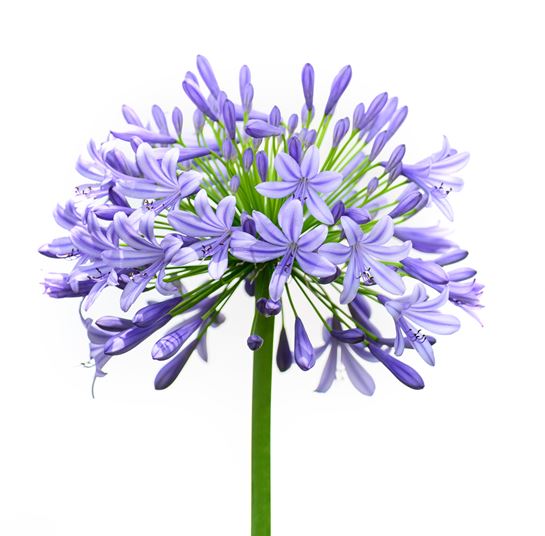Agapanthus Proliferation: Tips for Expanding Your Plant Collection
Agapanthus Proliferation: Tips for Expanding Your Plant Collection
Blog Article
Grasping the Art of Agapanthus Care: Crucial Steps for Healthy Growth and Dynamic Blossoms
In the world of gardening, the cultivation of agapanthus stands as a rewarding undertaking for those who seek to support these stylish blooming plants. From picking the right selection to understanding trimming methods, the trip in the direction of growing growing agapanthus plants is complex and holds the key to opening the full possibility of these organic treasures.

Selecting the Right Agapanthus Range

When choosing the right Agapanthus selection for your yard, take into consideration factors such as climate suitability, blossom color, and development routine. Furthermore, consider the environment in your region to make sure the Agapanthus range you choose can grow in your details problems. Understanding the growth routine of different Agapanthus varieties is critical for appropriate placement within your yard.
Perfect Growing Problems
Taking into consideration the optimum ecological needs is important for effective Agapanthus growing. Agapanthus plants are sensitive to chilly temperature levels and ought to be safeguarded from frost throughout winter months.
To make certain healthy and balanced growth and vivid blooms, plant Agapanthus light bulbs at a depth of regarding 2-4 inches and area them 8-12 inches apart. Adding natural issue, such as compost, to the soil can enhance drainage and fertility, promoting durable origin advancement. Mulching around the base of the plants helps keep moisture and subdues weed development. Normal watering is crucial, specifically throughout the growing period, to maintain the dirt consistently moist however not soaked.
Watering and Fertilizing Tips
Keeping correct dampness levels and giving important nutrients are essential components in the treatment program for Agapanthus plants. When it comes to sprinkling Agapanthus, it is vital to strike a balance. These plants like continually moist dirt however are prone to root rot if overwatered.
Feeding Agapanthus is essential for promoting healthy and balanced development and respected blossoms. Use a well balanced fertilizer, such as a 10-10-10 formula, in the early spring as brand-new development emerges. By complying with these watering and fertilizing tips, you can guarantee your Agapanthus plants prosper and produce dynamic, long-lasting flowers.
Trimming Techniques for Agapanthus
Trimming Agapanthus plants at the suitable times and with proper techniques is crucial for preserving their wellness and promoting ideal development and blooming. The ideal time to trim Agapanthus is in late winter or early spring before new growth arises. Start by eliminating any kind of yellowing or dead fallen leaves near the base of the plant. Cut them as close to the ground as feasible without damaging the arising shoots.
For flowered stems, wait until the blooms have perished and after that trim them back to the base. This not only cleans up the plant's appearance yet additionally encourages the advancement of brand-new blossom buds. Deadheading invested flowers can additionally reroute the plant's energy into creating even more blooms as opposed to setting seeds. Nevertheless, if you wish to accumulate seeds for breeding, leave some blossoms to dry and mature on the plant.
Bear in mind to utilize tidy, sharp devices to make exact cuts and lower the risk of click resources presenting conditions. Agapanthus. Routine trimming will assist maintain your Agapanthus looking neat and healthy and balanced while making certain an abundant display of stunning blooms
Dealing With Common Insects and Diseases
After ensuring appropriate trimming strategies for Agapanthus, it is crucial to deal with usual parasites and illness that can influence the health and wellness and vitality of these plants. Agapanthus plants are typically sturdy yet can still succumb particular problems. One typical bug that affects Agapanthus is the Agapanthus gall midge. This tiny, orange fly lays its eggs in the vegetation, bring about altered development and flower buds that fail to open up. To fight this insect, trim and ruin any kind of damaged plant components and think about utilizing insecticidal soap.
An additional common concern is fungal fallen leave spot, which provides as dark lesions on the fallen leaves. To stop fungal diseases, guarantee great air circulation around the plants, stay clear of above watering, and remove any kind of contaminated leaves promptly. In addition, Agapanthus plants can struggle with root rot if they are planted in badly draining pipes soil. To stop this, plant Agapanthus in well-draining soil and stay clear of overwatering. By being vigilant and taking punctual action versus parasites and conditions, you can assist your Agapanthus plants thrive over here and generate vibrant blossoms.

Verdict
In conclusion, understanding the art of agapanthus care entails choosing the ideal selection, offering suitable planting conditions, appropriate watering and feeding, proper pruning strategies, and addressing common insects and diseases. By following these vital steps, you can make certain healthy and balanced growth and vivid blooms for your agapanthus plants. Remember to routinely keep an eye on and preserve your plants pop over to this site to advertise their overall health and long life.
To make sure healthy and balanced development and vivid flowers, plant Agapanthus light bulbs at a depth of about 2-4 inches and area them 8-12 inches apart. By adhering to these watering and fertilizing ideas, you can ensure your Agapanthus plants prosper and create lively, durable flowers.
One typical parasite that affects Agapanthus is the Agapanthus gall midge. Furthermore, Agapanthus plants can endure from origin rot if they are planted in improperly draining dirt. By complying with these vital actions, you can ensure healthy and balanced growth and vivid blooms for your agapanthus plants.
Report this page